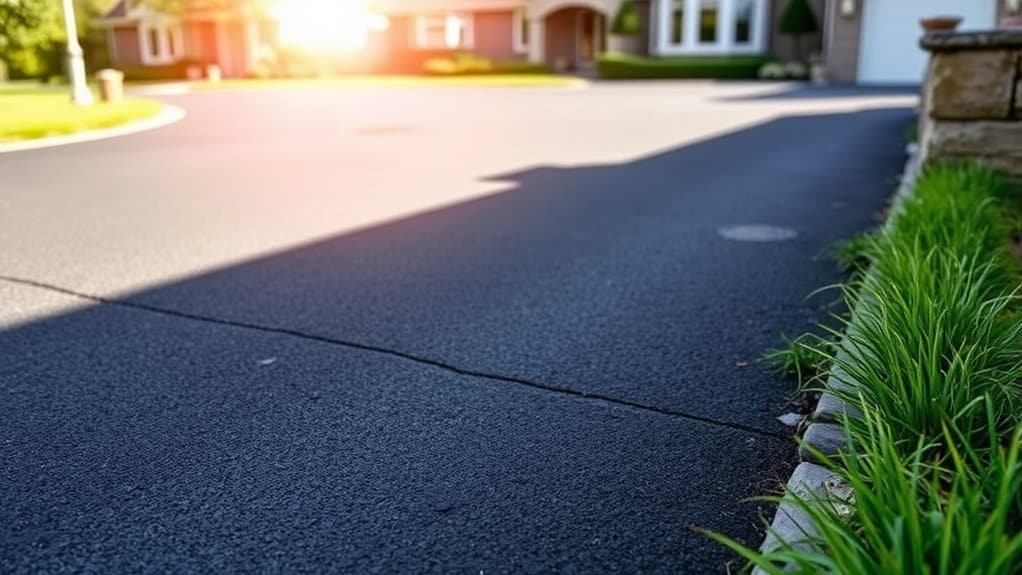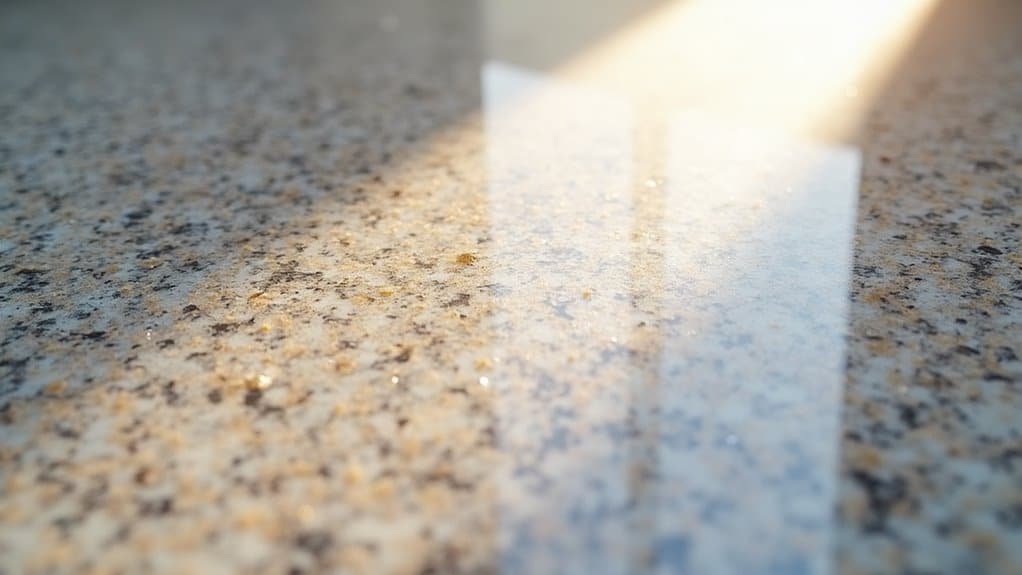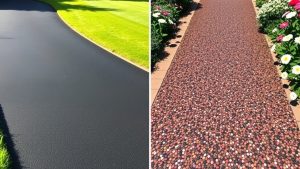Tarmac driveways typically last between 15 to 20 years, but with quality installation and regular upkeep, they can last up to 25 years. Factors such as traffic volume, vehicle weight, and weather conditions play a significant role in their lifespan.
To keep your driveway in good condition, clean it regularly, promptly fix any cracks, and apply sealant every 2-3 years. Staying proactive with these tasks can help prevent erosion and further damage. For more specific maintenance tips to ensure your driveway remains in top shape, read on.
Table of Contents
ToggleKey Takeaways
Tarmac driveways generally have a lifespan of 15 to 20 years, but with proper maintenance and high-quality installation, they can last up to 25 years.
To extend your driveway's life, regular maintenance is key. This includes keeping it clean and addressing any repairs promptly. Be aware that extreme weather, like intense heat or heavy rain, can impact the structure of your tarmac driveway.
Ensuring a well-prepared sub-base during installation is vital for durability and performance. Additionally, applying sealant every 2-3 years can protect your driveway from everyday wear and tear, further enhancing its longevity.
Average Lifespan of Tarmac Driveways
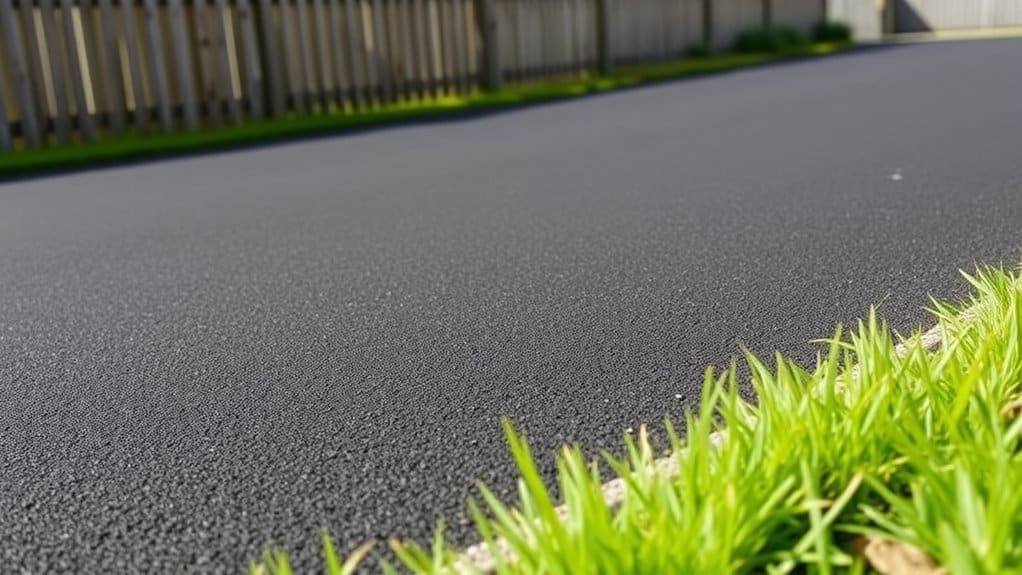
A well-laid tarmac driveway typically lasts between 15 to 20 years.
With good maintenance, you can extend its lifespan to 25 years or even longer.
The durability depends on the quality of the initial installation and how well it's cared for. Proper preparation of the sub-base and regular upkeep are key to maintaining both its functionality and appearance.
Factors like extreme weather and heavy vehicle traffic can affect its longevity, so keep these in mind when planning your maintenance.
Regular cleaning, prompt pothole repairs, and reapplying sealant can help prevent deterioration and keep your driveway looking its best.
Additionally, proper installation significantly enhances the longevity of the driveway, as it ensures a solid foundation and resilience against wear and tear.
Investing in quality materials from the start will ensure a more robust surface, which not only enhances your property's value but also reduces long-term costs.
Factors Affecting Lifespan
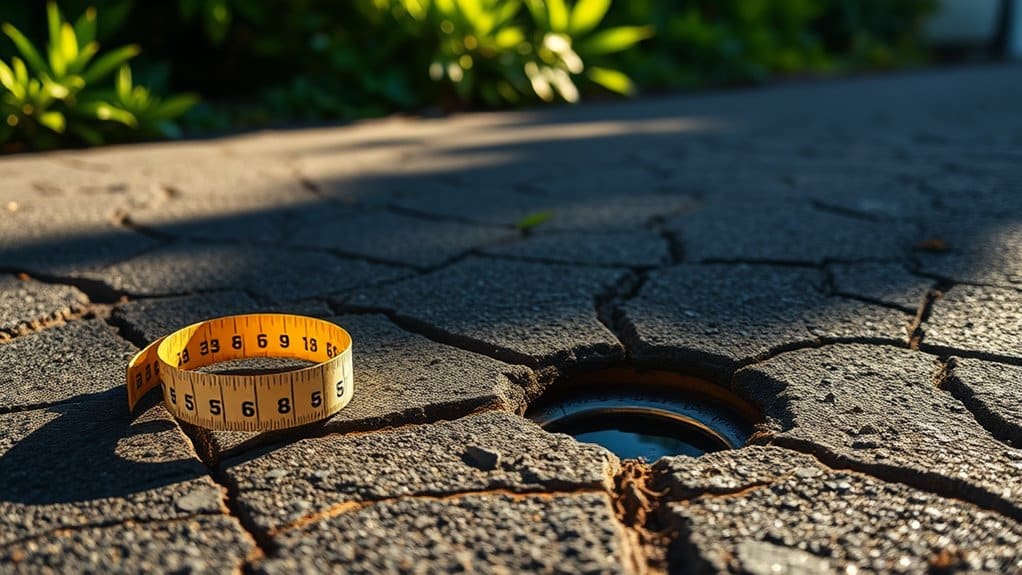
The lifespan of your tarmac driveway depends on several key factors, including the amount of traffic it sees, local weather conditions, and how well it was installed. For instance, a driveway that regularly endures heavy vehicles will wear out faster than one with light use. Similarly, extreme heat or heavy rainfall can lead to cracks and structural issues. To ensure a long-lasting surface, it's crucial to use proper installation techniques that can handle these stresses. Additionally, high customer satisfaction often correlates with the quality of the installation, which can significantly impact the driveway's longevity.
Traffic Volume Impact
Tarmac driveways are durable, but their lifespan is significantly influenced by traffic volume. Heavy vehicles, such as lorries and large SUVs, exert more stress and can cause faster wear and tear.
Even regular cars contribute to this degradation over time, meaning you'll need to carry out maintenance more frequently. Traffic patterns, especially sharp turns and sudden stops, create concentrated pressure that accelerates damage. To protect your driveway, it's important to spread the weight of vehicles as evenly as possible and limit access for larger vehicles.
Regular inspections and prompt repairs are also essential to prolong its life, even in high-traffic areas. By managing traffic wisely, you can significantly enhance the longevity of your tarmac driveway. Additionally, regular maintenance can help extend the lifespan of your driveway, ensuring it remains in good condition for years to come.
Climate Influence
Traffic volume isn't the only factor affecting the lifespan of tarmac driveways; the climate is equally important. Extreme temperature swings, freeze-thaw cycles, and prolonged UV exposure can significantly damage tarmac. By adopting effective climate adaptation strategies, we can reduce the negative effects of these environmental factors.
| Climate Factor | Effect on Tarmac Lifespan |
|---|---|
| Extreme Temperature Fluctuations | Causes cracks due to expansion and contraction |
| Freeze-Thaw Cycles | Leads to water infiltration and further cracking |
| Prolonged Sunlight Exposure | Degrades bitumen, making it brittle |
| High Rainfall & Moisture | Weakens the tarmac base, causing erosion |
Understanding these influences can help you take better care of your driveway and prolong its life.
Installation Quality
The quality of installation is crucial for the lifespan of a tarmac driveway. To ensure durability, pay attention to these key factors:
- Sub-Base Preparation: Ensure the soil is removed and replaced with well-compacted crushed stone for stability.
- Base Thickness: A minimum base layer of 50mm is essential to support the weight of vehicles properly.
- Skilled Workmanship: Choose qualified contractors who understand the importance of proper compaction and material quality.
Investing in correct installation techniques and hiring experienced contractors is vital for a tarmac driveway that lasts.
Regular inspections during the installation process can also help identify potential issues early, improving overall performance.
Material Quality and Its Impact
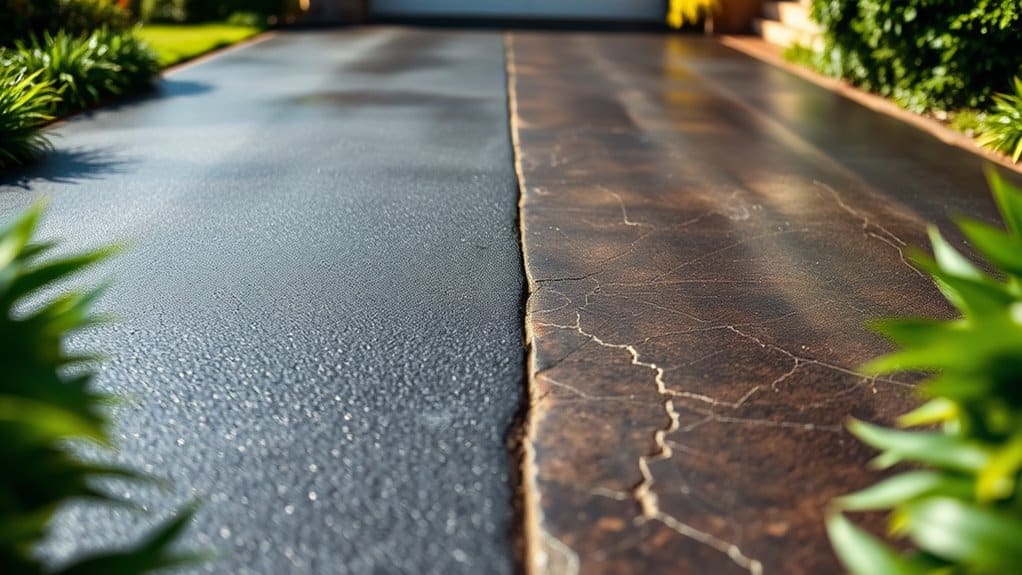
High-quality materials are crucial for the longevity and performance of your tarmac driveway. The durability of the materials directly influences how well it can handle wear and tear, ensuring it lasts longer.
When choosing aggregates, opt for larger sizes, as they often provide better durability, even if the surface is a bit rougher. The bitumen content is also key; higher levels improve strength but can raise costs.
It's vital that materials comply with specific production standards to resist moisture and UV damage. Good moisture resistance and effective drainage are essential for maintaining the driveway's integrity during extreme weather conditions.
Ultimately, investing in quality materials reduces maintenance needs and extends your driveway's lifespan, making it a wise financial decision.
Importance of Installation Quality
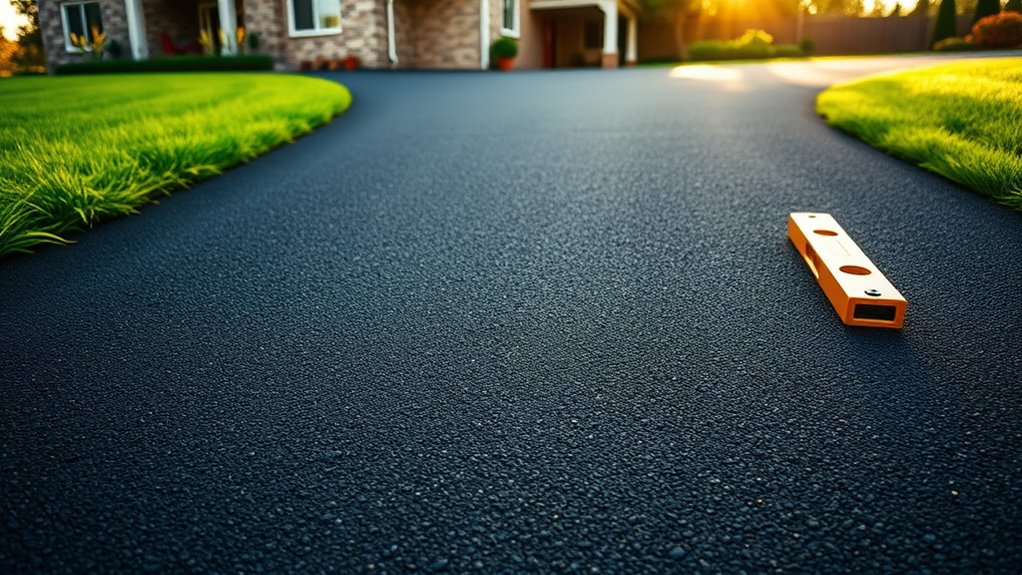
While selecting quality materials is crucial, the importance of installation quality is equally significant. Proper installation directly impacts the lifespan and durability of your tarmac driveway.
Here are some key points to ensure a high-quality installation:
- Foundation Preparation: A solid base is vital to prevent cracks and potholes, resulting in a smooth surface that lasts.
- Contractor Selection: Choosing an experienced contractor ensures compliance with installation standards, which enhances both longevity and appearance.
- Drainage Planning: Effective drainage is essential to prevent water build-up, reducing potential damage and extending the life of your driveway. Additionally, using quality materials during the installation process can significantly improve the overall durability of your tarmac driveway.
Essential Maintenance Tips
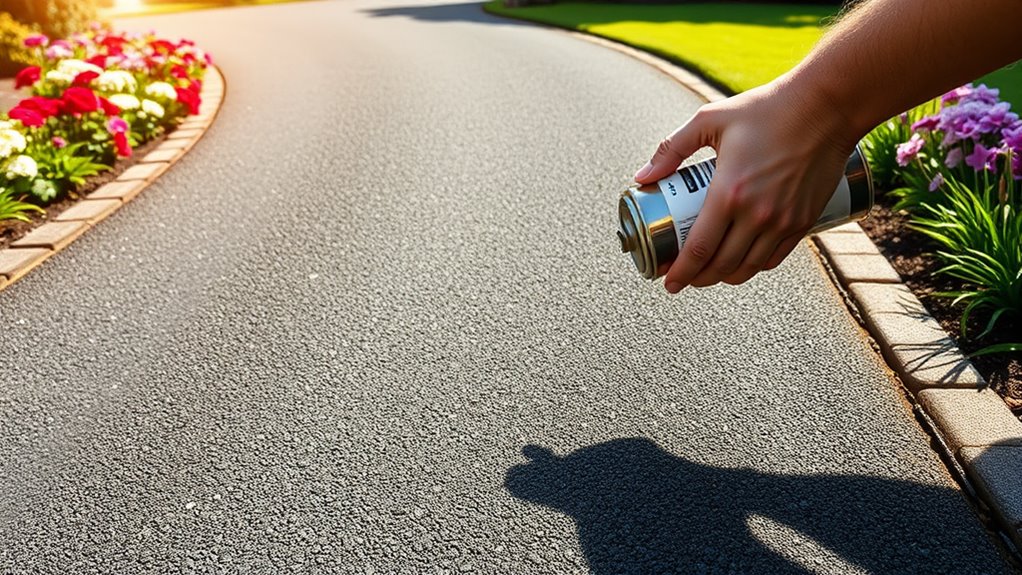
To keep your tarmac driveway in good shape, establish a regular cleaning schedule to avoid debris and stains.
It's important to make timely repairs; tackling cracks and potholes as soon as they appear can save you from more serious damage down the line.
Regular Cleaning Routine
A regular cleaning routine is vital for keeping your tarmac driveway in good condition and looking its best.
Establishing a cleaning schedule helps ensure durability and visual appeal. Here are some straightforward cleaning techniques to follow:
- Remove Debris: Use a broom or blower to clear away loose dirt and leaves.
- Pressure Wash: Carefully use a pressure washer to clean the surface without causing damage.
- Stain Removal: For tougher stains, apply tarmac-specific cleaning products and rinse thoroughly.
Make sure to let your driveway dry completely before applying any sealants.
Timely Repairs Needed
Timely repairs are crucial for the upkeep and longevity of your tarmac driveway. Regular inspections are important to identify issues like cracks, potholes, and oil stains.
Addressing these problems quickly—such as filling in cracks and potholes—prevents water from seeping in and causing further damage.
Reinforcing the edges with topsoil or grass can help stabilise the structure, while sealcoating every few years offers protection against moisture and UV damage.
Managing heavy vehicle traffic and ensuring proper drainage will also reduce wear and tear.
Regular Cleaning and Debris Removal
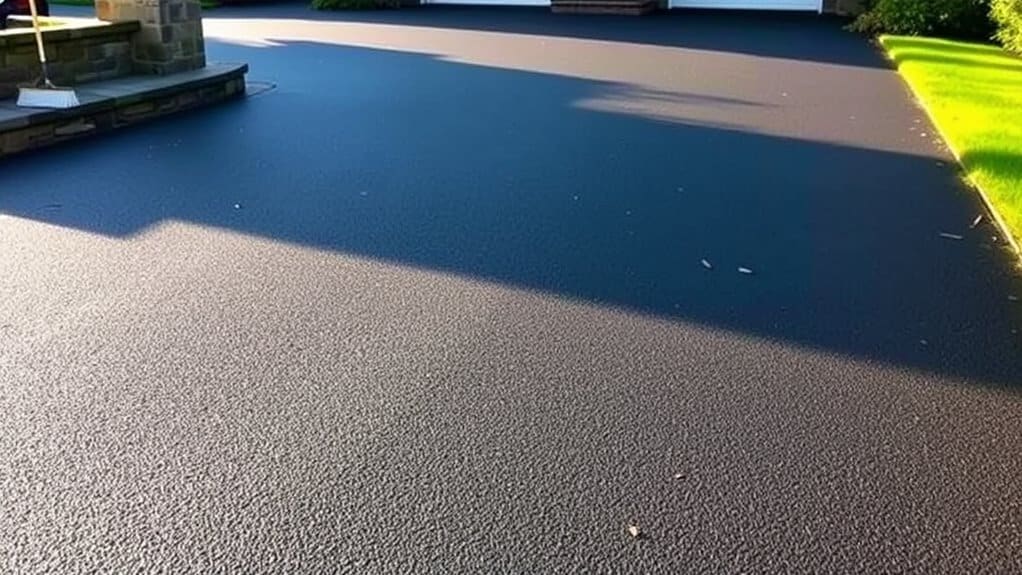
Regular cleaning is crucial for maintaining your tarmac driveway. If you neglect this task, dirt can accumulate, leading to quicker wear and tear. Proper debris management helps keep your driveway in good condition.
Here are some straightforward cleaning methods:
- Use a stiff-bristled brush to scrub the surface and remove loose dirt and debris.
- Pressure wash the driveway to tackle stubborn stains, making sure to rinse thoroughly to avoid residue.
- Apply specialised cleaning products for specific stains, such as degreasers for oil spills or vinegar solutions for moss.
Keeping your driveway clean not only improves its appearance but also extends its lifespan.
Damage Inspection and Repairs
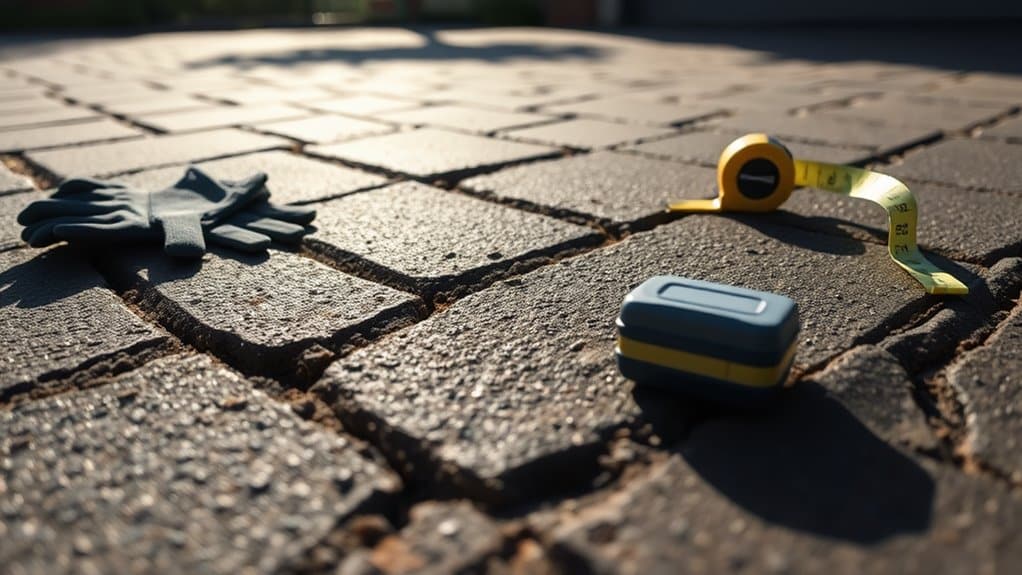
Regular damage inspections are vital for maintaining the integrity and longevity of your tarmac driveway.
By promptly addressing issues like cracks and potholes with quick repair methods, you can prevent more serious damage.
Using preventative maintenance strategies, such as applying sealant, will also help protect your driveway from the weather.
Regular Damage Checks
To keep your tarmac driveway in good shape, it's important to carry out regular damage checks to spot potential problems early.
By doing routine inspections, you can ensure your driveway stays in top condition.
Pay attention to these three key areas:
- Holes and Cracks: Keep an eye out for any damage that could worsen with time.
- Uneven Patches: Look for any irregularities that might compromise the surface's stability.
- Water Damage: Watch for pooling or erosion, as these can lead to serious issues.
Regular checks can save you time and money in the long run.
Quick Repair Techniques
Identifying issues during damage checks is crucial for timely repairs to keep your tarmac driveway in good condition.
For small cracks, use the right compounds, and regularly check for larger ones. To maintain appearance and durability, apply UV-resistant coatings.
Cold lay tarmac is effective for filling potholes, and Everbuild QuickMac is great for various types of damage. Avoid chemical-based solutions, as they can harm the tarmac.
Timing is key—conduct maintenance during warmer, drier weather for proper curing. Always use compatible materials and proper compaction tools to extend the life of your repairs.
Schedule repairs before harsh weather to protect your driveway's integrity.
Preventative Maintenance Strategies
To keep your tarmac driveway in good condition and extend its lifespan, adopt a proactive maintenance approach.
Here are three essential strategies:
- Regular Inspections: Examine your driveway for cracks, potholes, and signs of wear at least twice a year.
- Weather Monitoring: Pay attention to how extreme weather impacts your driveway and adjust your maintenance routine as needed.
- Debris Management: Remove debris weekly to prevent stains and ensure proper drainage.
Sealant Application for Protection
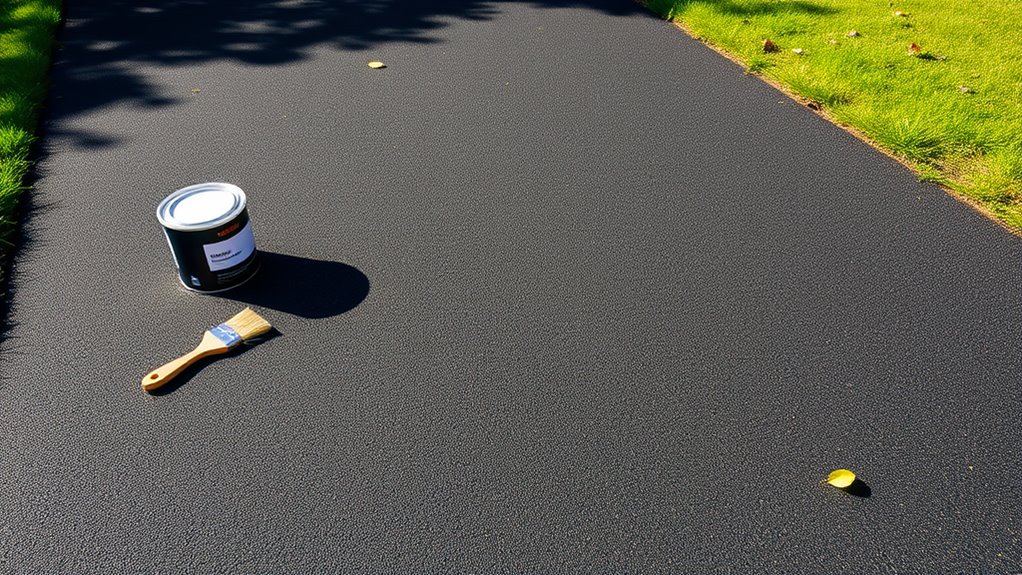
Applying sealant to your tarmac driveway is essential for protecting its integrity and extending its lifespan. There are various types of sealants available, suitable for both new and older driveways, each offering different levels of adhesion and durability.
Before you start, ensure the surface is clean and free from debris. Use a paint roller or squeegee for proper application, and make sure the temperature is above 10°C (50°F) for best results.
Apply the sealant in small, even amounts to avoid pooling. Follow the manufacturer's instructions regarding drying times and reapplication, which is usually recommended every 2-3 years.
This will help keep your driveway looking good and protect it from environmental damage, ultimately prolonging its life significantly.
Traffic Volume and Vehicle Weight Considerations
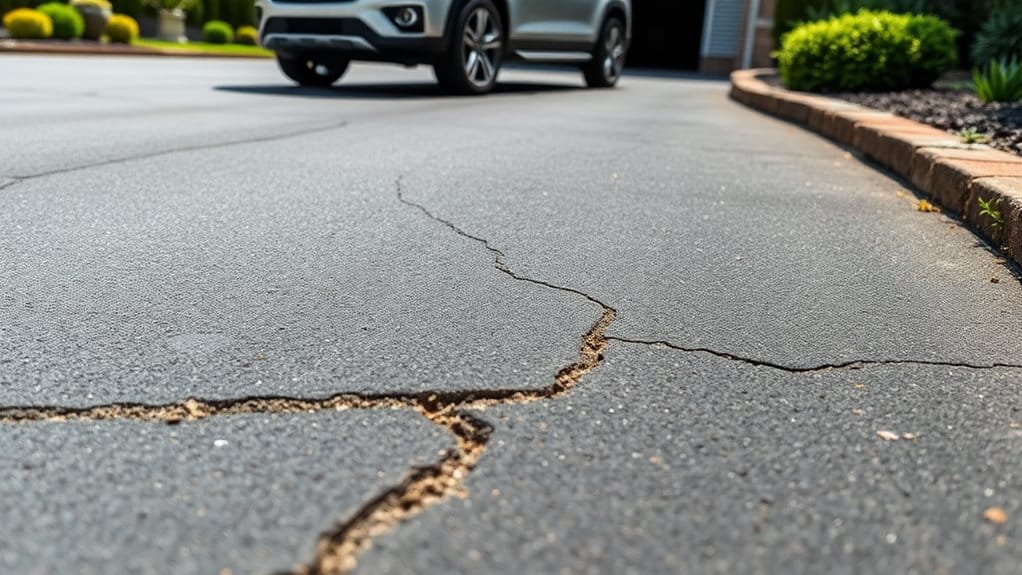
Understanding how traffic volume and vehicle weight affect your tarmac driveway is crucial for its upkeep.
Different types of vehicles put different amounts of stress on the surface, and heavier vehicles can significantly reduce its lifespan.
Here are some tips to help you manage this:
- Limit Heavy Vehicles: Try to avoid parking or manoeuvring heavy lorries or machinery on your driveway whenever possible.
- Optimise Weight Distribution: Ensure that vehicle weight is evenly distributed to avoid creating concentrated stress points that can lead to damage.
- Monitor Traffic Frequency: Frequent, high-volume traffic causes more wear than occasional use, so be mindful of how often your driveway is used.
Climate Conditions and Their Effects
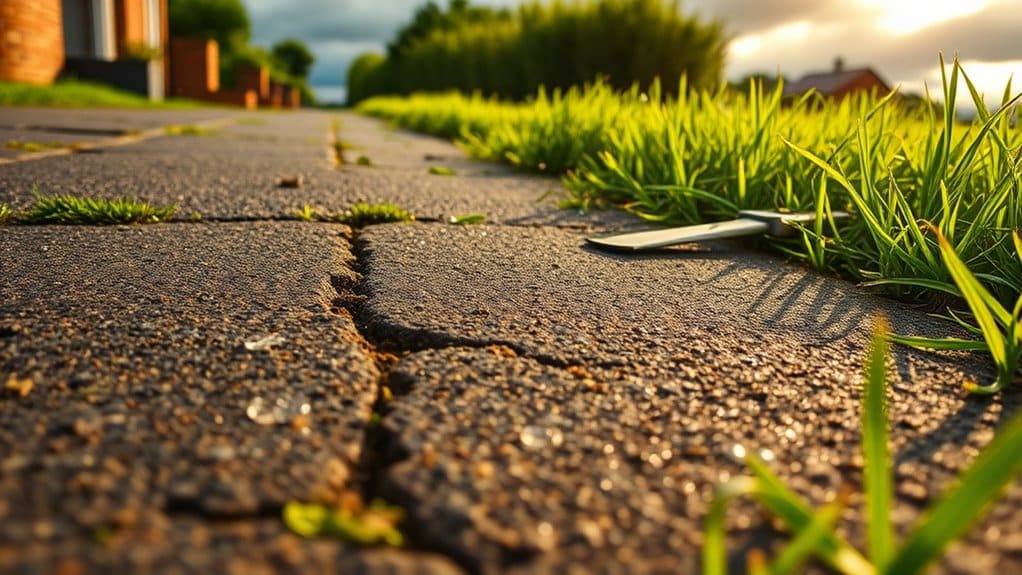
The longevity of your tarmac driveway is significantly affected by climate conditions. Tarmac is reasonably adaptable, but extreme temperatures can cause serious problems. Prolonged heat may soften the surface, while freezing conditions can lead to cracks due to the freeze-thaw cycle.
To enhance weather resilience, ensure proper installation with adequate drainage to prevent frost heave. Regular maintenance, such as sealing cracks, is vital, particularly in harsh climates.
Be cautious with de-icing salts, as they can damage the tarmac; consider alternative methods instead. By tackling these climate challenges early, you can extend your driveway's lifespan and reduce potential weather-related damage.
Water Exposure and UV Damage
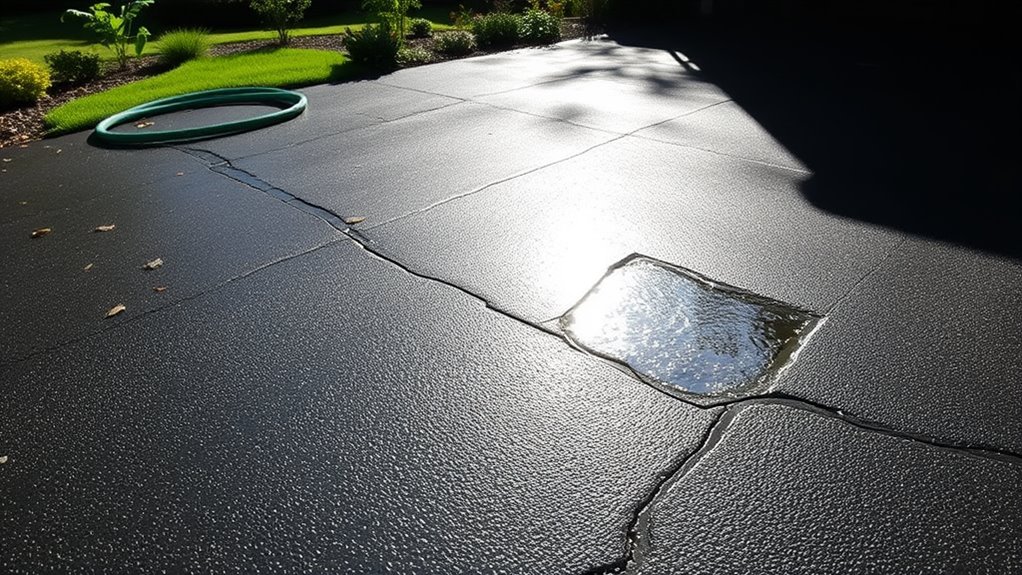
Tarmac driveways are known for their durability, but their lifespan can be significantly affected by water exposure and UV damage.
Proper water management and UV protection are vital for preserving your driveway.
Here are three key impacts to consider:
- Water Penetration: Water can infiltrate tarmac, causing structural damage and increasing the likelihood of cracks and potholes.
- UV Degradation: Extended exposure to sunlight deteriorates the bitumen, making the surface brittle and less flexible.
- Surface Erosion: Heavy rainfall can wash away the top layer, diminishing durability and leading to more frequent maintenance.
Care and Sealing Recommendations
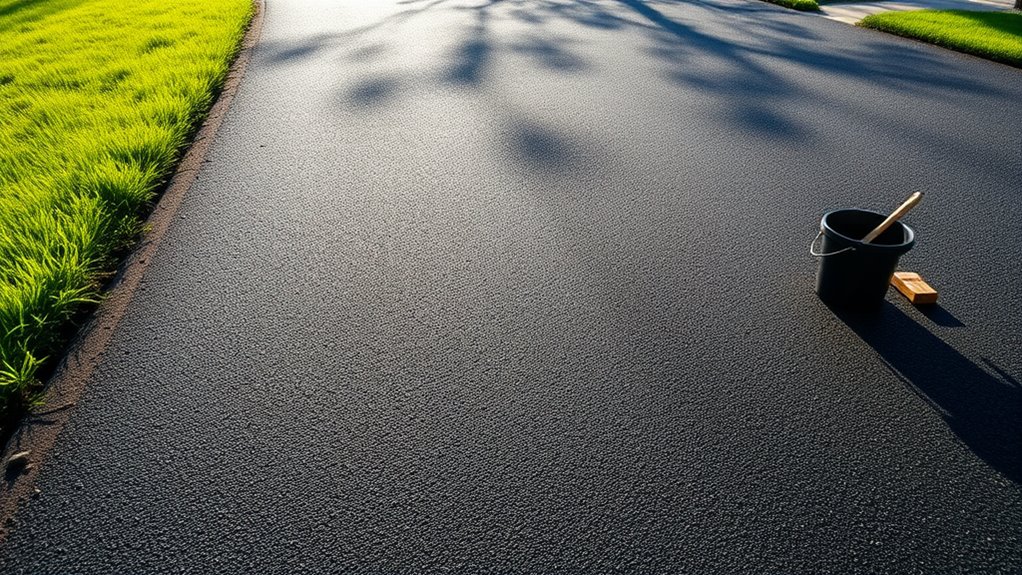
To keep your tarmac driveway in good condition and prolong its life, it's important to follow proper care and sealing practices.
Start by regularly sweeping away debris, cleaning up spills promptly, and using a low-pressure power washer to prevent damage. For tougher stains, scrub them with hot water and a mild detergent.
To protect your driveway further, apply a sealant every 3 to 5 years. Sealcoating shields against weather conditions, improves appearance, and helps prevent weeds.
Be mindful of the weight of vehicles and traffic patterns to reduce wear and tear.
Regularly check for cracks and potholes; catching these early makes repairs easier and more effective.
Frequently Asked Questions
Can I Install a Tarmac Driveway Myself?
You can try to install a tarmac driveway yourself, but it requires specific tools and skills. It's crucial to prepare the sub-base properly and follow local regulations to ensure a successful and lasting result. For instance, if you're not familiar with laying a solid foundation, you might face issues like cracking or uneven surfaces later on. If you're unsure, it might be worth considering hiring a professional.
What Are the Signs of a Failing Tarmac Driveway?
Signs of a failing tarmac driveway include visible cracks, potholes, and uneven surfaces. These issues often indicate structural stress and moisture damage that require prompt attention. For example, if you notice water pooling in certain areas after rain, it may signal drainage problems that can worsen over time. Keeping an eye out for these signs can help you address issues before they escalate.
How Does Tree Root Growth Affect Tarmac Driveways?
Tree roots can cause serious damage to your tarmac driveway. It's important to regularly check for cracks and uneven surfaces. Consider taking proactive steps to manage tree root growth, such as planting trees further away from the driveway or using root barriers, to prevent issues from worsening. Regular maintenance can save you time and money in repairs.
Is It Safe to Park Heavy Machinery on Tarmac?
Parking heavy machinery on tarmac is not advisable, as it can damage the surface. The weight can lead to wear and create ruts, which compromises its durability. It's best to avoid leaving heavy machinery parked for long periods and to consider alternatives, like gravel or reinforced surfaces, for heavy loads.
What Colors and Finishes Are Available for Tarmac Driveways?
There are a variety of tarmac colours available, such as grey, green, blue, red, and buff. For a decorative touch, you can choose from smooth, textured, or polished finishes to not only improve the look of your driveway but also its practicality.
Conclusion
In summary, tarmac driveways generally last between 10 and 15 years. However, with proper maintenance, they can last much longer. Using high-quality materials and professional installation can enhance their durability by as much as 50%. To keep your driveway in good condition, make sure to seal it regularly and watch for any signs of wear and tear. By being aware of the factors that influence its lifespan, you can enjoy the benefits of your tarmac driveway for many years.
Prepare the perfect base for your resin bound stone installation and discover the crucial factors that ensure lasting durability.
Know where resin bound surfacing can transform spaces for both residential and commercial use, and discover the countless benefits that Read more
A stone carpet combines beauty and resilience in flooring, but what makes quartz floors uniquely beneficial? Discover the secrets behind Read more

